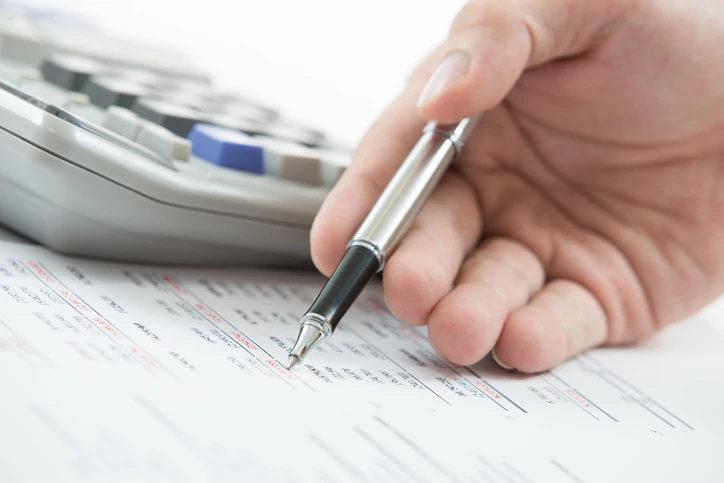12/10/2021 | Category: Commercial Insurance

Business rates are an all-too-familiar part of life as a UK business. But what exactly are they, how are they calculated – and are any businesses or properties exempt from paying them? Read on for our essential guide to this centuries-old form of business taxation.
Business owners have to juggle lots of financial commitments – business rates being just one of them – so protect yourself from the unexpected with commercial insurance.
What are business rates?
One of Britain’s oldest forms of taxation, business rates can trace their history all the way back to the Poor Law of 1601. Essentially, they are the tax you pay for occupying a business, or non-domestic premises. This includes premises where companies are based and where employees work.
Business rates represent the way that commercial, non-residential occupants contribute towards the cost of local authority services such as emergency services, public transport, maintaining public spaces and street lighting – plus social care, waste management and education.
In the UK, business rates are set at (approximately) 50 per cent of the annual rent of the property (also known as the ‘rateable value’). You may be able to get a sum subtracted from that rate, under any one of various different relief schemes, which we’ll look at in more detail below.
The rateable value broadly represents the yearly rent which a property could have been let for on the open market on a particular date. This value is set by the Government – specifically, the Valuation Office Agency (VOA), an agency of Her Majesty’s Revenue and Customs (HMRC). The VOA calculates your business rates based on your rateable value: it also maintains a full list of all rateable values across the country. You can find and check your property’s rateable value on the government website. This is useful for budgeting purposes, as it will give you an idea of what your next business rates bill will be; it may also prove useful if you decide to challenge your business rates valuation. Your property’s current rateable value can also be found on the front of your business rates bill.
Business rates are administered and collected, however, not by central government but by local authorities, who get to keep a proportion of all business rates owed in their area.
These charges are, naturally, not best loved by many businesses – especially small businesses – as they typically represent one of any business’ largest overheads.
How are business rates calculated?
Business rates are handled similarly, though with slight differences, in England, Scotland, Wales and Northern Ireland.
In Scotland, business rates (also known as non-domestic rates) are calculated, similarly to the English example above, by multiplying a property’s rateable value by a tax rate known as 'poundage' – typically around 0.5, or the 50% we mentioned above. Once again, certain reliefs or discounts can then be deducted from that total, followed by any other adjustments or payments you've already made.
Similarly, in Wales, a property’s rateable value is multiplied by the ‘pence in the pound’ factor, known as the multiplier (again, typically around 0.5), to calculate the property’s business rates liability. Any reliefs that the property is eligible for are subtracted from the final business rates total. Welsh business rates are collected by local authorities and paid into a national ‘pool’ administered by the Welsh Government.
In Northern Ireland, meanwhile, it’s once again a very similar situation, just with things given a different name. Your business rates bill is made up of a number of parts including the regional rate, the district rate and Net Annual Value (NAV) – the same as rental or rateable value. The final total is calculated by multiplying the NAV of your property by the non-domestic rate poundage for your council area for the relevant year. Again, the poundage comes out at around 0.5.
Do business rates ever change?
Yes, business rates change to reflect changes in the values of the properties they apply to. This is called Revaluation – and the VOA carries it out every five years, adjusting every business property’s rateable value to reflect how the property market has changed. The last revaluation for business premises in England and Wales came into effect on 1st April 2017. This process is handled slightly differently in Scotland and Northern Ireland.
At revaluation, it’s not only all the properties that get assigned a new rateable value; those multipliers (typically around 0.5) are revised, too. So you may find that your rateable value changes – but your bill remains more or less the same.
I work from home. Will I have to pay business rates?
Generally, no: you won’t need to pay business rates if you are working from home but only using a small part of your home for your business (using one room as an office, for instance). After all, you are already paying Council Tax on this property.
However, there are a few circumstances in which you’ll be charged business rates on top of Council Tax. These include:
- If your property is split into separate domestic and business areas – such as a flat over a shop, for example
- If you sell things to customers on the premises
- If you employ anyone at the property
- If you have made certain changes to your home to be able to run a business from there – perhaps converting a garage into a home office
Unsure whether you should be paying business rates? Your best bet is to contact the VOA. It’s also worth being clear on your home-working status when you come to arrange commercial insurance, as your exact status may affect your premiums.
Can you challenge your business rates bill?
In 2007, the VOA launched a new appeals scheme for business rate payers, called
Check, Challenge, Appeal (CCA). Under this scheme, it’s the ratepayer’s duty to check their business rates assessment before challenging or appealing. The three stages of the appeal process are:
Check: This is the stage when all the details about your business property need to be checked and confirmed carefully. You then submit a ‘Check’ document – after that, the VOA has 12 months to go over your document carefully and give you their response.
Challenge: Once the facts have been agreed between you and the VOA, you can challenge their business rates valuation. You can do this within four months of the VOA’s initial decision on your ‘Check’ document. Alternatively, you have 16 months to appeal if your challenge is related to a change in the area around your business premises – roadworks, for example.
Appeal: If you still do not agree with the VOA’s decision, you can ask the independent Valuation Tribunal for a review. You’ll have to lodge your appeal with the Valuation Tribunal within four months of the Challenge decision. You can also appeal if the VOA has not replied to you within 18 months of your Challenge. If you hold a commercial insurance policy, it may be able to help with some of the costs of mounting this challenge.
Am I eligible for business rates relief?
Some properties are eligible for discounts on their business rates – what is known as ‘business rates relief’. Once again, business rates relief is managed slightly differently in each of the four nations. The onus is on you to contact your local council to see if you’re eligible to apply for any of the schemes. These include small business rate relief, rural rate relief, charitable rate relief, enterprise zone relief, hardship relief, retail discount and local newspaper relief.
It’s worth looking at some of the commonest forms of relief in a little more detail, so you can see whether any of them may apply to you.
Small business rate relief
You can get small business rate relief if:
- your property’s rateable value is less than £15,000
- your business only uses one property (and you may still be able to get relief if you use more than one)
If your property’s rateable value is £12,000 or less, you won’t pay any business rates at all: between £12,001 and £15,000, your reduction (relief) will decrease from 100% down to 0%. So, for example, if your property’s rateable value is £13,500, you’ll get 50% off your bill; a property with a rateable value of £14,000 will receive a 33% reduction. You should contact your local council to apply for small business rate relief.
Rural rate relief
You could qualify for rural rate relief if your business is in a rural area with a population below 3,000. On top of this, your business must be either:
- the only village shop or post office, with a rateable value of up to £8,500
- the only public house or petrol station, with a rateable value of up to £12,500
If your business fits either of these criteria, you’ll be exempt from business rates.
Contact your local council to check whether you qualify.
Transitional relief
This form of business rates relief is designed to help you cope with changes to your bill because of revaluation, which we discussed above. If you qualify, you’ll get the changes to your bill introduced gradually, rather than getting the shock of a sudden increase. You can qualify if your property is in England, and your rates have gone up or down by more than a certain sum.
Hardship rate relief
This particular relief scheme can help a business to recover from a temporary crisis, whether financial or otherwise, that came out of some exceptional circumstances. How it is awarded varies slightly from one nation to the next: in England, for example, you must prove that your business would suffer financial difficulties without the aid, and also that the hardship relief will benefit local people, not just you and your business. The circumstances that brought about the crisis must be judged to be exceptional. Something that would be covered by a business’ commercial insurance policy, for example, would not normally qualify.
Exempted buildings relief
Certain properties are exempt from paying business rates. These include agricultural land and buildings; premises that look after or train disabled people; and church halls and other places of worship. If your property is based in England, and you think you may qualify, you can contact the Valuation Office Agency and let them know the details of your case.
In Wales, meanwhile, the process for reporting exemptions happens slightly differently: you can find some guidance on the government website.
A list of exempted premises in Scotland, and advice on how to apply for exemption, can be found on the mygov.scot website.
Empty buildings relief
If your business property becomes empty for a while, or you acquire a premises and leave it empty for some time before occupying it, you will find that you don’t have to pay any business rates for the first months. After this time, for most businesses, the rates will be payable.
However, some properties can get this empty property relief for a longer period. These include:
- industrial buildings, which are exempt for a second three-month period
- listed buildings: these are exempt until they are reoccupied
- properties with a rateable value of less than £2,900 – again, no rates are due until they’re reoccupied
- premises belonging to charities – these can remain exempt, if the property’s next use will be largely for charitable work
- community amateur sports clubs buildings – if their next use will be mostly as a sports club
Don’t forget to contact your local council to let them know when your property becomes vacant. It’s also worth bearing in mind that, if the period of vacancy was due to some form of business interruption, your commercial insurance policy may be able to provide some cover for lost earnings during that period.
Find the right commercial insurance for your business
At Insurance Choice, we recognise that running a business brings with it a variety of expenses – and risks. We take pride in providing UK businesses with cover against some of these unforeseen circumstances.
We are proud to provide cover for a wide range of different businesses – visit our website to find the policy that corresponds to your line of business, and contact us to find out more about the commercial insurance policy that will work best for you.
Policy benefits, features and discounts offered may very between insurance schemes or cover selected and are subject to underwriting criteria. Information contained within this article is accurate at the time of publishing but may be subject to change.
